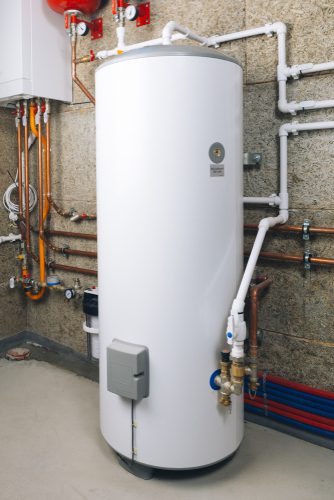High Quality Gas Water Heaters in Houston
Need gas water heater help? The team at Nick’s gets it done—fast and right. When your hot water suddenly goes cold in Houston’s unpredictable climate, you need a prompt solution you can rely on. Nick’s Plumbing & Air Conditioning provides expert services for gas water heaters in Houston TX. Our team of licensed plumbers specializes in the repair, installation, and replacement of all major gas water heater brands throughout the Houston, Texas area.
Don’t suffer through another cold shower or wait days for service. Call Nick’s now for prompt appointments, upfront pricing, and complete plumbing services you can trust to get the job done quickly, professionally, and correctly the first time.
Full-Service Gas Water Heater Solutions
At Nick’s Plumbing & Air Conditioning, we handle everything from minor gas heater repairs to complete gas water heater replacements in Houston and surrounding communities. Our comprehensive services keep your hot water flowing reliably all year round.
Gas water heater repair in Houston
When you call our licensed plumber for water heaters in Houston, our skilled technician will quickly identify and resolve common issues like:
- No hot water or insufficient hot water production.
- Leaking tanks or connections requiring immediate attention.
- Pilot light issues that won’t stay lit or ignite properly.
- Problems with burner assemblies, gas lines, and thermostats.
We support all major brands, including Rheem, AO Smith, Bradford White, and more. When your gas water heater starts acting up, our technicians arrive with fully-stocked service vehicles ready to diagnose and repair the issue on the spot. Most water heater repairs in Houston can be completed in a single visit, minimizing disruption to your household.
Gas water heater installation & replacement
Whether you’re building new, renovating, or replacing an aging unit, trust Nick’s for your gas water heater installation in Houston. When you turn to Nick’s for your gas water heater replacement in Houston, our services include:
- Expert sizing and placement recommendations for 40- and 50-gallon models
- Code-compliant installation with proper permits and venting for maximum safety
- Energy-efficient models that help lower utility bills in Houston’s high-demand climate
- Professional removal and disposal of your old gas water heater
- Complete system testing before we consider the job complete
Our technicians take the time to explain your options, helping you select the appropriate solution for your Houston home and budget. We handle every detail from delivery to final connections.
Why Houston Homeowners Trust Nick’s Plumbing
We’ve built our reputation on reliability, quality workmanship, and transparent business practices. When you choose Nick’s for your gas water heater services near you in Greater Houston, you’re partnering with the best in the business.
Local, family-owned, and operating since 1979
Nick’s Plumbing & Air Conditioning has served the Houston area for over 40 years. We’re not a franchise. We’re your neighbors, and we treat your home like our own. Our deep knowledge of our region’s water quality, weather challenges, and local building codes means we understand exactly what your Houston home needs.
Licensed, insured, and background-checked technicians
You’re not just getting a licensed plumber for water heaters in Houston. You’re getting a professional who’s been vetted, trained, and trusted to do the job right. Our skilled technicians undergo continuous training to stay current with the latest gas water heater technology, brands, models, and safety protocols. Every professional who enters your home is background-checked for your peace of mind.
Upfront pricing, honest recommendations
We don’t believe in surprises. In the spirit of full transparency and integrity, you’ll always know what you’re paying before any work starts. Our plumbers provide clear explanations of what’s wrong before starting any gas water heater repairs in Houston. They’ll present all available options—from repair to replacement—letting you make an informed decision that’s right for your home and budget.
Same-day appointments available
Understandably, you don’t want to go days or weeks on end without hot water. When your water heater goes out, we move fast to restore service, often on the same day. We prioritize emergency gas water heater repairs around Houston, offering extended hours and weekend availability as needed.
When Should You Repair or Replace Your Gas Water Heater?
Understanding when to repair or replace your gas water heater can save you money and prevent unexpected cold showers. Here’s what every local homeowner should know about gas water heater replacements in Houston.
Signs you need repair
Don’t ignore these warning signs that indicate you need professional gas water heater repairs in Houston:
- Inconsistent water temperature or suddenly lukewarm showers
- Pilot light repeatedly extinguishes or won’t stay lit after relighting
- Rumbling or popping noises coming from the tank, indicating sediment buildup
- Small puddles or corrosion at the base, pointing toward minor leaks
- Yellow flame instead of a blue flame, indicative of combustion issues
Time to replace? here’s what to watch for
You may want to consider a full gas water heater replacement in Houston if you notice any of these red flags:
- The existing unit is 8 to 15 years old.
- You’re experiencing multiple breakdowns that require multiple service calls.
- Gas bills are higher than usual despite no change in usage patterns.
- Rust-colored water is coming from hot taps in your home.
- There is inconsistent water heating despite recent repairs.
The humidity and mineral content in our water can be tough on heaters. The hard water and humid weather can shorten the typical lifespan of a unit compared to drier climates with softer water. Our team can help you weigh repair costs against the benefits of a new gas water heater replacement in Houston. Ask us about our current special offers and deals.
What to Expect When You Book with Nick’s
We’ve streamlined our gas water heater services near you, helping to restore your hot water as quickly and as painlessly as possible.
- Call (346) 485-3508 or schedule online—we’ll confirm your appointment ASAP.
- Our licensed plumber for water heaters in Houston will inspect your system thoroughly.
- You will receive clear options and pricing, including flexible financing plans.
- We will complete repairs or gas water heater replacements in Houston fast, clean, and professionally.
- There’s no mess left behind—we respect your home and clean up completely before leaving.
Many of our customers are surprised by how smooth and stress-free the process can be. From diagnosis to completion, we keep you informed every step of the way. Ask us about Nick’s Smart VIP Maintenance Program to keep your home’s plumbing and HVAC systems operating at their best.
Proudly Serving Houston and Surrounding Communities
Nick’s Plumbing & Air Conditioning repairs and replaces tank water heaters throughout Houston and surrounding communities. Our Greater Houston service area covers:
- The Heights
- Spring Branch
- River Oaks
- Garden Oaks
- Bellaire
- Katy
- Cypress
- Memoria
- West University
- Sugar Land
- and surrounding areas
No matter where you are in the Houston metro area, our team is ready to handle all of your gas water heater needs. With our fleet of fully-stocked service vehicles, we’re never far away when you need emergency water heater repairs Houston residents can count on.
Don’t wait until you’re taking cold showers to address your water heater issues. Contact us today to schedule service or to book a consultation on upgrading your gas water heater system. Texas homeowners have trusted Nick’s since 1979 for everything from minor gas water heater repairs in Houston to complete system replacements. Turn to us when you need a licensed plumber for water heaters in Houston.
Frequently Asked Questions About Gas Water Heaters
Can I replace my electric water heater with a gas one?
Yes, you can switch from an electric unit to a gas water heater in Houston, TX. Professional installation of this conversion requires a gas line connection, proper venting, and electrical modifications. Gas water heaters can heat water faster and cost less to operate than electric models. Our team can assess your home’s setup and provide a detailed estimate for the conversion process.
Do I need a permit to replace a gas water heater in Houston, TX?
Yes, gas water heater replacements in Houston require permits from the City. This mandate helps to maintain safety standards and proper gas water heater installation practices. Nick’s handles all permitting requirements for you, making sure your installation meets or exceeds all local building codes and safety regulations.
What size gas water heater do I need for my home?
Many factors affect sizing requirements for gas water heaters in Houston, TX. Simultaneous water usage, appliance demands, and your household’s specific habits all impact your choice. In general, we recommend:
- 30-40 gallon tank for one to two people.
- 40-50 gallon tank for three to four people.
- 50+ gallon tank for households with more than five people.
Our technicians can help you determine the ideal size for your specific needs during an in-home consultation.
Are there energy-efficient gas water heaters available?
Absolutely! Modern gas water heaters have significantly improved efficiency ratings. High-efficiency models with better insulation and smarter controls can reduce gas consumption by as much as 40% compared to older models. Ask our team for recommendations, including tankless options.
My pilot light won’t stay lit—what should I do?
A pilot light that won’t stay lit could indicate:
- Dirty or damaged thermocouple
- Improper gas pressure
- Draft issues affecting the flame
- Dirty pilot tube
For safety reasons, we strongly recommend calling a professional rather than attempting multiple relights. Gas buildup can occur with repeated attempts, creating a hazardous situation for your family.
























